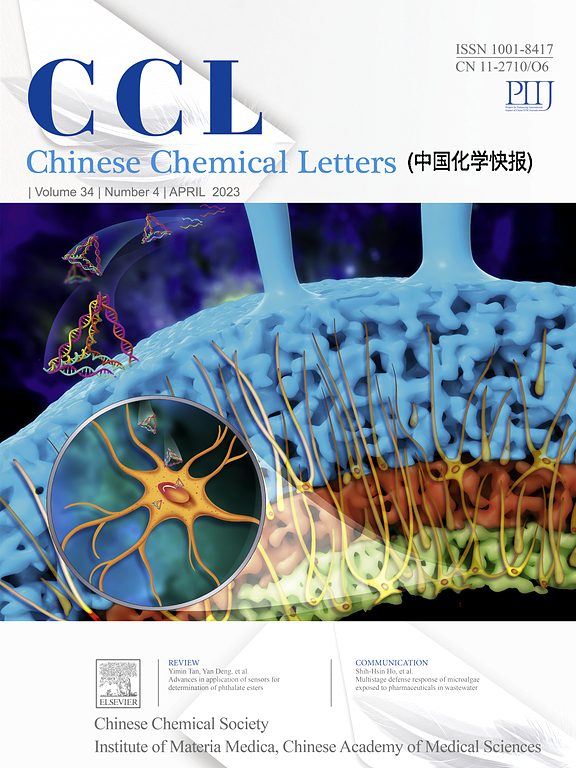Radar-stealth and thermal-insulating MOF-derived cellulose-carbon aerogels for broadband electromagnetic wave absorption
IF 8.9
1区 化学
Q1 CHEMISTRY, MULTIDISCIPLINARY
引用次数: 0
Abstract
Considering the challenges posed by severe electromagnetic wave pollution and escalating international tensions, there is a critical need to develop advanced electromagnetic wave absorbing (EMWA) materials that integrate radar stealth and thermal insulation capabilities. In this study, we have synthesized three-dimensional (3D) porous composites comprising V2O3 nanoparticles embedded in Juncus effusus cellulose-derived carbon aerogels (VCA) using a self-templating method followed by high-temperature pyrolysis. The V2O3 nanoparticles possess a 3D V-V framework and a relatively narrow bandgap, facilitating the Mott transition for enhanced conductivity. Furthermore, their uniform dispersion on hollow carbon tubes of Juncus effusus promotes efficient electron transfer and creates numerous heterogeneous interfaces. Consequently, VCA-2 demonstrates outstanding EMWA performance, achieving a minimum reflection loss of −63.92 dB at a matching thickness of 2.0 mm and a maximum effective absorption bandwidth of 8.24 GHz at a thickness of 2.44 mm, covering nearly half of the tested frequency range. Additionally, the radar cross-section reduction reaches a peak value of 29.40 dB m2, underscoring the excellent radar stealth capabilities of the material. In summary, VCA exhibits exceptional EMWA, radar stealth, and thermal insulation properties, highlighting its potential for multifunctional applications in EMWA material development.

雷达隐身和隔热mof衍生的纤维素碳气凝胶用于宽带电磁波吸收
考虑到严重的电磁波污染和不断升级的国际紧张局势所带来的挑战,迫切需要开发先进的电磁波吸收(EMWA)材料,将雷达隐身和隔热能力结合起来。在这项研究中,我们利用自模板法和高温热解法合成了三维(3D)多孔复合材料,该复合材料将V2O3纳米颗粒嵌入到积液Juncus纤维素衍生的碳气凝胶(VCA)中。V2O3纳米颗粒具有3D V-V结构和相对较窄的带隙,有利于Mott跃迁,从而提高电导率。此外,它们均匀地分散在空心碳管上,促进了有效的电子传递,并产生了许多异质界面。因此,VCA-2具有出色的EMWA性能,在匹配厚度为2.0 mm时,最小反射损耗为- 63.92 dB,在匹配厚度为2.44 mm时,最大有效吸收带宽为8.24 GHz,覆盖了近一半的测试频率范围。此外,雷达横截面减少达到29.40 dB m2的峰值,强调了该材料出色的雷达隐身能力。总之,VCA具有优异的EMWA,雷达隐身和隔热性能,突出了其在EMWA材料开发中的多功能应用潜力。
本文章由计算机程序翻译,如有差异,请以英文原文为准。
求助全文
约1分钟内获得全文
求助全文
来源期刊

Chinese Chemical Letters
化学-化学综合
CiteScore
14.10
自引率
15.40%
发文量
8969
审稿时长
1.6 months
期刊介绍:
Chinese Chemical Letters (CCL) (ISSN 1001-8417) was founded in July 1990. The journal publishes preliminary accounts in the whole field of chemistry, including inorganic chemistry, organic chemistry, analytical chemistry, physical chemistry, polymer chemistry, applied chemistry, etc.Chinese Chemical Letters does not accept articles previously published or scheduled to be published. To verify originality, your article may be checked by the originality detection service CrossCheck.
 求助内容:
求助内容: 应助结果提醒方式:
应助结果提醒方式:


